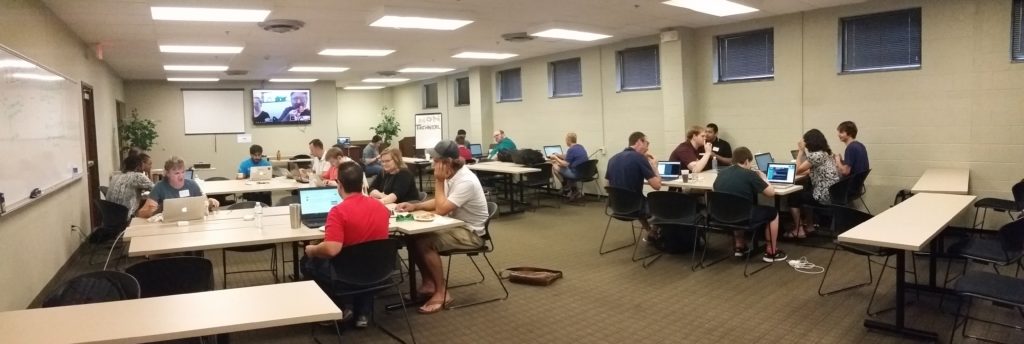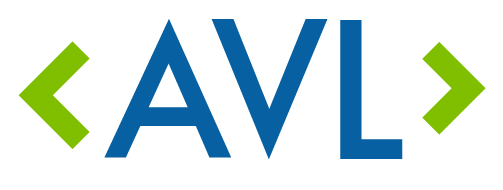The NC Reentry Resources Hub project is a website providing high-quality information and resources relevant and valuable to NC citizens reentering society after a period of incarceration or dealing with collateral consequences of a previous criminal conviction. Last year Code for Asheville volunteers created a site for Buncombe County. Now Code for Asheville and Code for Greensboro are partnering on a project to serve all 100 counties in North Carolina. As a multi-brigade collaboration, we are developing the open source project under the Code for North Carolina banner.

On Saturday, July 22 over 20 people gathered at the Nussbaum Center for Entrepreneurship in Greensboro and another 7 people met at the Montford Recreation Complex in Asheville to work together to move the new statewide North Carolina Reentry Resources Hub project forward.
Live-streaming via Google hangout, Jason Marshall kicked off the event with an introduction to Code for America and the plan for the day, followed by an overview of the purpose and history of the project from Eric Jackson. To engage all volunteers in attendance regardless of skillset, we formed technical and non-technical teams focused on various project tasks. While the technical group worked on bug fixes, feature development, deployment of the public site, and design and architecture for an interface for content editors, the non-technical group focused on usability testing, and writing guidelines for website topic content. For those interested in contributing code to the project but still learning the tech stack, Greensboro set up a tutorials corner to learn Git, Javascript, HTML, React and GraphQL.
What Worked
All-in-all the event was an awesome success. Not only did participants help us make significant progress during the 3-hour event, but the activity has continued on Github and Slack over the last couple weeks. Equally exciting, several new people have became engaged in the project and taken on longer-term tasks. The project now has a core group of contributors that are collaborating to push the project forward. That gives a tremendous boost to the overall sustainability of the effort. Thank you all!
Another thing that worked well: using a Google hangout for shared presentation. The hackday achieved a sense of connectedness and participation in something bigger than ourselves, at least in part due to the remote communication. This worked especially well in Greensboro, where the livestream was up on a big screen. In Asheville the streaming laptop was co-opted for testing, although collaborations continued via Slack chats between GSO and AVL folks. Next time around we will definitely make sure we have big screens on both ends.
What Worked … Not So Much
There were also a couple things that didn’t work so well. Our attempt to set up Google Hangouts for collaborations on specific topics ended in general disarray. Fortunately, the collaborations via prepared Google docs and ad hoc Slack discussions kept things moving productively forward. We will definitely focus on these rather than hangouts for the next event.
We could also have done a better job specifying some of the GitHub issues – sometimes we over-specified things when we weren’t actually clear ourselves, others we just failed to communicate that we wanted to leave the figuring-out up to the participants. It came out all right in the end, given the talented and engaged volunteers in attendance.
Where From Here
We expect to launch the new NC Reentry Resources Hub public site this fall and hope to have the administrative tools available on the same timescale. If you’re interested in playing a role, reach out to one of us, or check out opportunities on the reentry project center.
By Eric Jackson & Jason Marshall
This article is from the semi-weekly Code for Asheville newsletter. See the rest of this issue here. Sign up for future mailings here.
